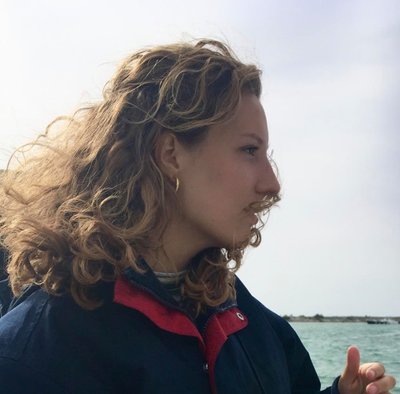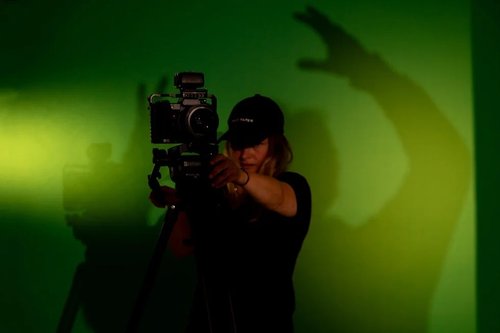Weak ties theory: The secret ingredient of the job hunt
Nov 30, 2022 - updated Feb 08, 2024
7 mins


Journaliste - Welcome to the Jungle
In a world where inflation is rising and uncertainty reigns, landing a job has never been more of a priority. Sadly, our nearest and dearest are rarely much help in that department. But you know what, you’re thinking about it all wrong—it’s not your close circle you need. Quite the opposite. The secret to a successful job search lies just a few connections away. Occupational sociologist Amandine Mathivet and networking coach Hervé Bommelaer talk us through the comeback of a phenomenon that sociologists have known about for decades.
It’s not unusual to feel a bit reluctant to contact your acquaintances when you’re looking for work. After all, your relationship is probably limited to a few conversations a year. Or maybe you don’t chat at all. So why would you ask them for help? It’s not as if they owe you anything. Yet this is exactly how the weak tie theory works, and it’s pretty successful.
A closer look at weak ties
Mark Granovetter’s theory
Our close circle consists of our family and our very good friends. When we talk about strong ties, we’re referring to the people who link us to them. “On the other side of the equation, weak ties are the people we don’t know all that well**, or maybe not at all,” explains Mathivet. “In this scenario, weak ties refer specifically to a theory developed in the 1970s by US sociologist, Mark Granovetter.” At the time, he was trying to understand how the employment market was structured. Not by looking at supply and demand like the economists who had gone before him, but by concentrating on the market stakeholders. “Like all good sociologists, he looked at a wide variety of examples from job seekers and discovered that most people didn’t land jobs through their strong ties but rather through their weak ties,” continues Bommelaer. He also realized that the institutions themselves were incapable of finding the right people for the job, and so individual connections became the leading factor for success. Following this study, Granovetter published The Strength of Weak Ties in 1973, and has been championing the importance of acquaintances in job seeking ever since.
How does it work?
As things stand, weak ties are usually people who work in the same industry as you that you aren’t close to. They are divided into two categories:
- The first is people we kind of know and who kind of know us. “We’re not talking about family or close friends here, or even colleagues you get on well with, but someone like an old school friend from ten years ago,” explains Bommelaer
- As for the second category, that’s people we don’t yet know who we can meet through other acquaintances. “So, if your strong ties aren’t able to recommend you, weak ties may be able to make up for it,” continues Mathivet. They might even be twice as effective.
A network with benefits
Now you can see that weak ties are a priority when you’re looking for work, and not using them would be counterproductive. “An ineffective job seeker might focus on contacting head-hunters, but they only have access to between 13 and 17% of the market, so they’d potentially be cutting themselves off from over 80% of the market. By only concentrating on your strong ties, you’re doing the same, and considerably reducing your potential opportunities,”_ confirms Bommelaer. Our close circles usually consist of just a few people, ten to twenty at most. “In addition, our strong ties are rarely connected to our professional world,” adds the occupational sociologist. So even though our loved ones would like to help us out, their networks often have nothing to do with ours.
As for our weak ties, there are many more of them and so many more opportunities up for grabs. And they’re more likely to have something we are looking for. This is how one job hunter, Mathilde, landed her first job at an ad agency: “I looked to experts in my industry from the outset, as what they were saying was more relevant than my loved ones’ opinions.” She didn’t really consider asking her strong ties for help—her parents are of a different generation and don’t really get what she’s aiming for, and her friends don’t work in her chosen field and don’t know anything about it. “Of course, these weak ties were much less close and our relationship was absolutely no guarantee of a job, but the match made a lot more sense in terms of my career.”
In addition, you aren’t emotionally invested in your weak ties and that can be important too. “If you leave emotion out of it, then what you have is a purely professional exchange,” says Mathivet. No relationship issues are getting in the way and you have the freedom to do what you want. One of the reasons Mathilde contacted people who previously had work experience placements at the company she was targeting was to ask about the company culture. She’d heard some really good things from previous people who had held the role, and they represented the best of the industry in her opinion. This initiative enabled her to make contact with HR, stand out from the crowd, and land an interview. “I found it much easier being in contact with people I didn’t know because if it turned out I didn’t want the job, it would be really hard to turn it down, knowing a close friend had recommended me.”
How to make the most of weak ties?
Now that you’re sold on the idea, how do you go about it? How can you make contacting people you don’t know a success? Here are a few tips to make it easier.
1. Surround yourself with the right people
To create a network, you have to start with a specific goal. In this precise case, it’s pretty clear: to find a job. “Target people who can help you get closer to your goal in the industry you’re interested in,” says Bommelaer. Start by talking to the first category of weak ties, in other words, people in your industry you know or who you’ve crossed paths with professionally. Talk to them and tell them what you want: “I’m looking to work in this industry or this role, can you help introduce me to some people in the sector?” Then, little by little, you form an ecosystem. Then you need to make yourself visible to all those people who gravitate to or around it. “These new encounters will then connect you to other people with information, other people who might be watching, all within the same ecosystem, and so on,”_says Bommelaer.
After a while, it’s almost automatic: you’re visible to all of these weak ties who can help you to achieve your goal, whether you know them or not. “This process will eventually lead to you meeting the decision makers, the people capable of giving you a job.”
2. Making a connection
The question of how to make contact is a big issue when looking for a job. “The first problem is we’re brought up to mistrust people we don’t know,” reveals Bommelaer. “We’re taught from a young age not to ask for or demand things.” But networking is about being able to make a specific request of someone we don’t know. “So even though good manners demand you hold back and whisper in your ear that you’re being annoying or putting the person out, or tell you it’s not in their interest to reply … you have to push back and go for it,” says the specialist.
As for the best way to get people who don’t know you to spend some time helping you, you want a recommendation. After all, not all weak ties will be valuable. “They need to have some influence in the professional sector you’re targeting, they need to be known in the industry,”_ adds Mathivet. Be careful with it too” if you spot an interesting profile on a site like LinkedIn and you have a connection in common, always check the nature of that relationship. “If the person you’re contacting doesn’t know them, the strength of the recommendation is lost,” warns Bommelaer.
3. The art of being recommended
To create a useful contact with someone in your ecosystem, the best way is to be recommended by someone else. That’s what happened to Justine, who got her job with the help of a former colleague’s contact. The colleague offered to connect her with a friend who also worked in ecological transition so that she could help her with her search. “We met and it was through her that I got the job offer for my current role as she knew people in the industry,” she continues. “One thing’s for sure, I don’t think she would have shared her network with me if it wasn’t for our mutual acquaintance!”
This is where the ecosystem comes into its own: it can connect you to someone with a profile that’s useful to you. “If you get recommended to them, even if they feel a little irritated, they’ll feel obliged to talk to you, and eight out of ten times they’ll do it,” assures Bommelaer. “What this person doesn’t know yet is how good it will feel to be useful, and how valued they’ll feel when you chat.” And when you ask them for contacts to build your network, they’ll be more than happy to share them with you. For our coach, “That’s the magic of a network of weak ties.”
4. The must-have tool for connecting with weak ties: LinkedIn
In today’s world, we have access to a tool that Granovetter could never have imagined: social media networks. “LinkedIn puts your professional network online, giving us the ability to connect with people in the same industry, simply by sending them a message,”_ Mathivet reminds us. This is an incredible way to find out about the ecosystem in advance. “Take a look at your weak tie’s profile, you can see their career history and any connections you share, and that makes it much easier to connect with them,” continues Bommelaer.
“Always remember that although LinkedIn makes it quicker and easier to get things done, you can’t do the whole thing digitally,” adds the networking coach. Simply because those involved are individuals and not software tools. “It’s also important to go to the places your industry values, to read about the industry, soak up its culture, find out about the issues in your chosen profession so that you can talk animatedly about them,” recommends Mathivet.
Weak ties have much more to offer than you might think … you just need to make the first move.
Translated by Debbie Garrick
Photo: Welcome to the Jungle
Follow Welcome to the Jungle on Facebook, LinkedIn, and Instagram, and subscribe to our newsletter to get our latest articles every week!

More inspiration: Network for the job hunt

Messaging recruiters: 7 mistakes to avoid on LinkedIn
Think messaging a recruiter on LinkedIn guarantees an interview? Not if you make these mistakes. Here's how to get noticed for the right reasons.
Dec 02, 2024

From tech to television: the benefits of alumni networking
Using your alumni network can be a game-changer for your career, allowing you to connect with people who share your background and experiences.
Jul 30, 2024

How to network in tech with no experience
Networking can be daunting for anyone, but entry-level tech workers have a unique challenge ahead.
May 30, 2024

Make your mark: How to build a personal brand for the job hunt
What’s the secret to success in today’s job market? None other than personal branding.
Apr 22, 2024

Telling your story: How to craft a LinkedIn bio that will stand out to recruiters
This social media tool is at the tip of your fingers, and we bet you don’t know what you’re missing …
Feb 13, 2024
The newsletter that does the job
Want to keep up with the latest articles? Twice a week you can receive stories, jobs, and tips in your inbox.

Looking for your next job?
Over 200,000 people have found a job with Welcome to the Jungle.
Explore jobs